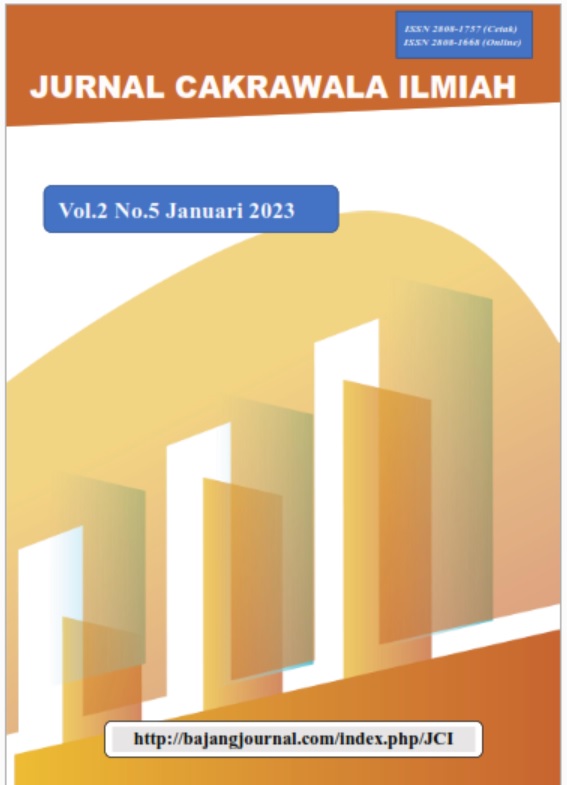SECURE ATTACHMENT DAN KUALITAS HUBUNGAN BERPACARAN PADA DEWASA AWAL YANG MENJALANI LDR
DOI:
https://doi.org/10.53625/jcijurnalcakrawalailmiah.v2i5.4602Keywords:
Long distance relationship, secure attachment, relationship quality, college studentAbstract
The focus of this study is to determine the relationship between secure attachment and relationship quality in early adulthood among college student who undergoing long distance relationship (LDR). This Study uses quantitative approach with correlational design. The sampling technique used is purposive sampling. The subject of this study is 44 SWCU Psychology Faculty Students Class of 2018 and 2019 who are undergoing long distance relationship. The measuring tools used in this study are adult attachment scale and perceived relationship quality – revised. Based on the correlation results of the product moment-Pearson is r = r = 0,348 (p < 0.05), meaning that hypothesis of this study is there is a positive relationship between secure attachment and relationship quality among college students who are undergoing long distance relationship (LDR).
References
Angela, I., & Ariela, J. (2021). Pengaruh Dimensi Attachment Avoidance dan Anxiety terhadap Kualitas Pengaruh dimensi attachment avoidance dan anxiety terhadap kualitas hubungan berpacaran dewasa muda. April. https://doi.org/10.24843/JPU.2021.v08.i01.p04
Awar, S. (2013). Sikap manusia: teori dan pengukurannya. Yogyakarta: Pustaka Pelajar.
Azwar, S. (2015). Metode penelitian. Yogyakarta: Pustaka Pelajar
Bartholomew, K., & Horowitz, L.M. (1991). Attachment styles among young adults: a test of a four-category model. Journal of Personality and Social Psychology, 61 (2), 226–244. https://doi.org/10.1037/0022-3514.61.2.226
Christensen, L.B., Johnson, R.B., & Turner, L.A. (2014). Research methods, design, andanalysis. Araştırma Yöntemleri Desen ve Analiz, 217–249.
Collins, N.L., & Read, S.J. (1990). Adult attachment, working models, and relationship quality in dating couples. Journal of Personality and Social Psychology, 58(4), 644–663.https://doi.org/10.1037/0022-3514.58.4.644
Demir, M. (2008). Sweetheart, you really make me happy: Romantic relationship quality and personality as predictors of happiness among emerging adults. Journal of HappinessStudies, 9(2), 257–277. https://doi.org/10.1007/s10902-007-9051-8
Romo, AVE, Romero, FEC, & García, LF (2014). Social perception of infidelity and lovestyles in the couple. Teaching and Research in Psychology , 19 (1), 135-147.
Farooqi, S. R. (2014). The construct of relationship quality. Journal of RelationshipsResearch, 5.
Fletcher, G.J.O., Simpson, J.A., & Thomas, G. (2000). The measurement of perceived relationship quality components: A confirmatory factor analytic approach. Personality and Social Psychology Bulletin, 26(3), 340–354. https://doi.org/10.1177/0146167200265007
Gherardi, S. (1988). LDR realtionship quality. Stress Inoculation Training, 16(1), 69–90.
Hurlock, E.B. (1996). Psikologi perkembangan. Jakarta: Erlangga.
Hassebrauck, M., & Fehr, B. (2002). Dimensions of relationship quality. Personal Relationships, 9(3), 253–270. https://doi.org/10.1111/1475-6811.00017
Hazan, C., & Shaver, P.R. (2004). Attachment as an organizational framework for research on close relationships. Close Relationships: Key Readings, 5(1), 186–214.https://doi.org/10.4324/9780203311851
Hazan, C., & Shaver, P.R. (2009). Psychological inquiry : an international journal for the advancement of psychological theory attachment as an organizational framework for research on close relationships attachment as an organizational framework for research on close relationships. May 2014, 37–41. https://doi.org/10.1207/s15327965pli0501.
Hendrick, S. S. (1988). A generic measure of relationship satisfaction. Journal of Marriage and the Family, (50), 93–98
Indira, P., Aryaningih, A., Pande, K., & Susilawati, A. (2020). Peran intensitas komunikasi dan regulasi emosi terhadap konflik interpersonal pada dewasa awal yang menjalani hubungan berpacaran jarak jauh. 7(1), 20–30.
Mikulincer, M., & Shaver, P.R. (2013). Oxford Handbooks Online. In Choice Reviews Online (Vol. 50, Issue 11). https://doi.org/10.5860/choice.50-5912
Morgan, H.J., & Shaver, P.R. (1999). Attachment processes and commitment to romantic relationships. In Handbook of interpersonal commitment and relationship stability (pp. 109-124). Springer, Boston, MA.
Noftle, E.E., & Shaver, P.R. (2006). Attachment dimensions and the big five personality traits: Associations and comparative ability to predict relationship quality. Journal of Research in Personality, 40(2), 179–208. https://doi.org/10.1016/j.jrp.2004.11.003
Putri, A.F. (2018). Pentingnya Orang Dewasa Awal Menyelesaikan Tugas Perkembangannya. SCHOULID: Indonesian Journal of School Counseling, 3(2), 35. https://doi.org/10.23916/08430011
Rae, M.O. (2017). Survei tentang kepuasan hubungan dalam pacaran pada pasangan jarak jauh (long-distance relationship). (Disertasi Doktoral, Universitas Sanata Dharma, 2017) Diakses melalui https://repository.usd.ac.id/12133/2/119114034_full.pdf
Renanda, S. (2018). Hubungan kelekatan dan kepuasan hubungan romantis pada mahasiswa politeknik kesehatan dr. soepraoen malang yang di mediasi oleh kepercayaan. Jurnal Ecopsy, 5(1), 29.
Roni, Dwi Pratama. (2016). Hubungan kepercayaan dengan kepuasan pernikahan ibu rumah tangga yang memiliki suami bekerja di luar kota. Skripsi, Fakultas Psikologi Universitas Kristen Satya Wacana Salatiga
Rusbult, C.E. (1983). A longitudinal test of the investment model: The development (and deterioration) of satisfaction and commitment in heterosexual involvements. Journal of Personality and Social Psychology, 45(1), 101–117. https://doi.org/10.1037/0022 3514.45.1.101
Sánchez, V., Muñoz-Fernández, N., & Ortega-Ruiz, R. (2017). Romantic relationship quality in the digital age: a study with young adults. Spanish Journal of Psychology, 20(2017), 1–10. https://doi.org/10.1017/sjp.2017.20
Settersten, R.A. (2007). Passages to adulthood : linking demographic change and human development. 251–272. https://doi.org/10.1007/s10680-007-9132-8
Simmons, B. L., Gooty, J., Nelson, D. L., & Little, L. M. (2009). Secure attachment: Implications for hope, trust, burnout, and performance. Journal of Organizational Behavior: The International Journal of Industrial, Occupational and Organizational Psychology and Behavior, 30(2), 233-247.
Simpson, J.A. (1990). Influence of attachment styles on romantic relationships. Journal of Personality and Social Psychology, 59(5), 971–980. https://doi.org/10.1037/0022-3514.59.5.971
Sugiyono. (2016). Metode penelitian pendidikan pendekatan kuantitatif, kualitatif dan r&d. Bandung: Alfabeta
The Center for Study of Long Distance Relationship. (2018). Long distance relationship frequently asked questions 2018. Diakses pada tanggal 10 Januari 2021, dari https://www.longdistancerelationships.net/faqs.htm.
Tidwell, M.C.O., Reis, H.T., & Shaver, P.R. (1996). Attachment, attractiveness, and social interaction: a diary study. Journal of Personality and Social Psychology, 71(4), 729–745. https://doi.org/10.1037/0022-3514.71.4.729
Zakiyah, R.U., & Nuraeni, E. (2020). Pola pemenuhan hak dan kewajiban suami istri long distance relationship (ldr) di desa batujaya, karawang. Al-Ahwal Al-Syakhsiyyah: Jurnal Hukum Keluarga Dan Peradilan Islam, 1(2), 165–178. https://doi.org/10.15575/as.v1i2.9913
Downloads
Published
How to Cite
Issue
Section
License
Copyright (c) 2023 Jurnal Cakrawala Ilmiah

This work is licensed under a Creative Commons Attribution-NonCommercial 4.0 International License.
















